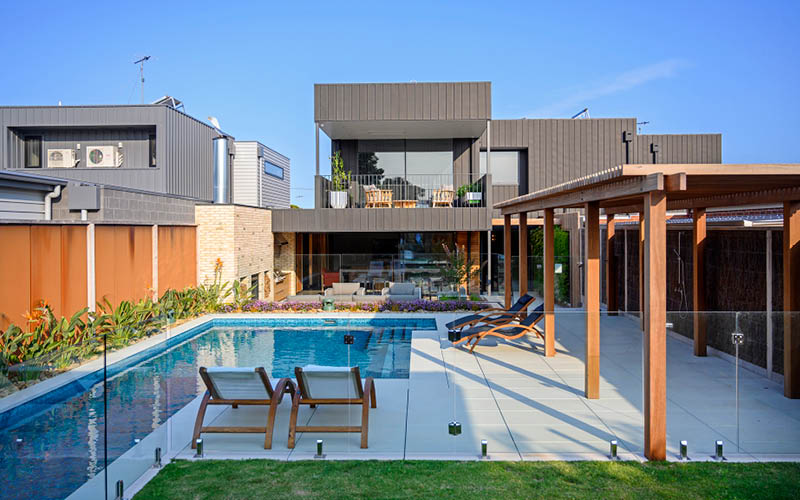Selecting timber that is fit for purpose is important. We’ll help you understand what to look for so that you’ll have a better idea of what timber to select when specifying a product.
1. Durability
Durability assesses the natural ability of timber to resist rot and fungi decay. That is, how the timber will perform in above ground and in-ground applications without any treatment.
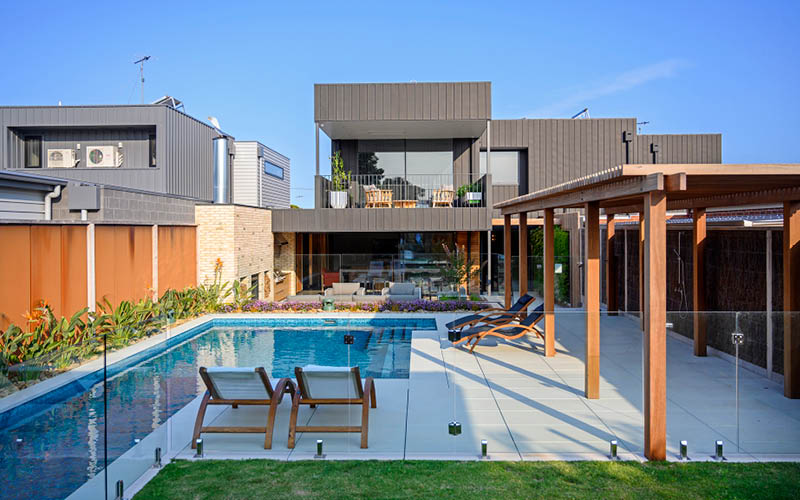 Architect: Bienefelt Architects | Builder: Voss Builders | Photographer: Ferne Millen Photography | Product: Porta Endure - Shiplap, & Porta Decking, Posts, Beams (in Cumaru).
Architect: Bienefelt Architects | Builder: Voss Builders | Photographer: Ferne Millen Photography | Product: Porta Endure - Shiplap, & Porta Decking, Posts, Beams (in Cumaru).
There are 4 classes of timber:
- Class 1 is a highly durable timber which has a probable in-ground life expectancy of 25 years or greater, and above ground 40 years or greater. Class 1 timbers are ideal for external applications, particularly in tropical environments.
- Class 2 is a durable timber which has a probable in-ground life expectancy of 15-25 years, and above ground of 15-40 years. Class 2 timber is satisfactory for use externally in colder, more temperate areas where there is less mould and fungi growth.
- Class 3 is a moderately durable timber which has a probable in-ground life expectancy of 5-15 years, and above ground of 7-15 years. Class 3 timber should typically be used internally.
- Class 4 is a non-durable timber which has a probable in-ground life expectancy of 0-5 years, and above ground of 0-7 years. Class 4 timber should typically be used internally.
Durability identifies a timber’s ability to stay structurally sound under attack from mould and fungi. It doesn’t mean that the timber will look as good as new in 40 years’ time (the timber will age, shrink, crack, and twist if it’s not protected), but structurally it will remain sound.
Common timber species and their Class rating:
| Timber Species | In Ground | Above Ground |
| Cumaru | 1 | 1 |
| Ironbark | 1 | 1 |
| Spotted Gum | 2 | 1 |
| Blackbutt | 2 | 1 |
| Merbau | 3 | 1 |
| Tasmanian Oak | 3-4 | 3-4 |
| Clear Pine | 4 | 4 |
| Meranti | 4 | 4 |
2. Appearance
As a natural product, timber has variations - no two pieces of timber look alike. Characteristics such as knots, gum vein, black speck, fiddleback, borers, or innocent marks and blackheart are all natural features of timber.
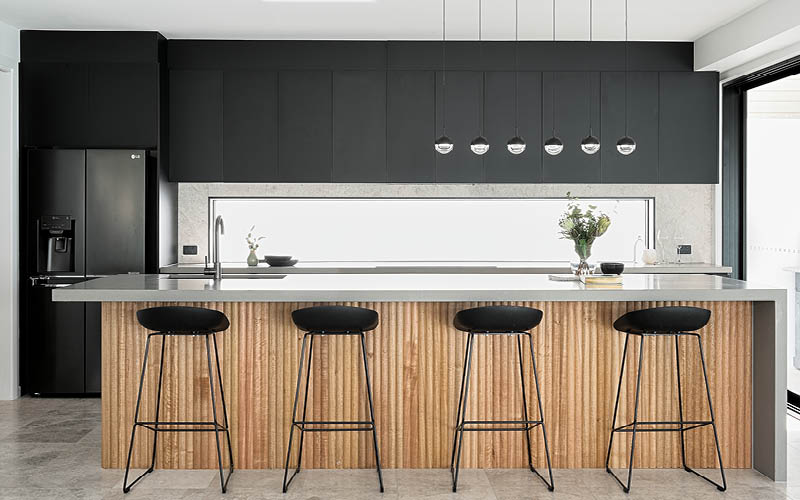 Design & Construction: Bright Black Developments | Photographer: Brock Beazley Photography | Product: Porta Contours – Riverine, in Tasmanian Oak.
Design & Construction: Bright Black Developments | Photographer: Brock Beazley Photography | Product: Porta Contours – Riverine, in Tasmanian Oak.
Natural features of timber:
 |
 |
 |
 |
 |
 |
| Knots | Gum Vein | Blackspeck | Fiddleback | Borers | Blackheart |
The appearance grading of timber addresses the acceptable amount of characteristics:
- Select Grade – allows a low level or a small amount of natural characteristics such as gum vein. Colour variation is not covered by appearance grading.
- Medium Grade (Standard or Classic) – allows more natural characteristics than Select Grade.
- High Feature / Utility Grade – allows quite a lot of natural characteristics so you’ll see large gum pockets and gum veins.
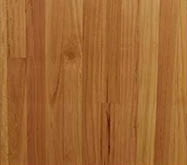 |
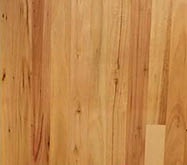 |
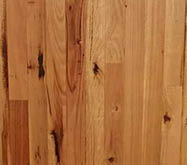 |
| Select Grade | Medium Grade | High Feature |
3. Hardness
Hardness is determined by the Janka rating of the timber. Understanding the hardness of timber is important as the harder the timber, the harder wearing it is and its ability to resist denting and wear.
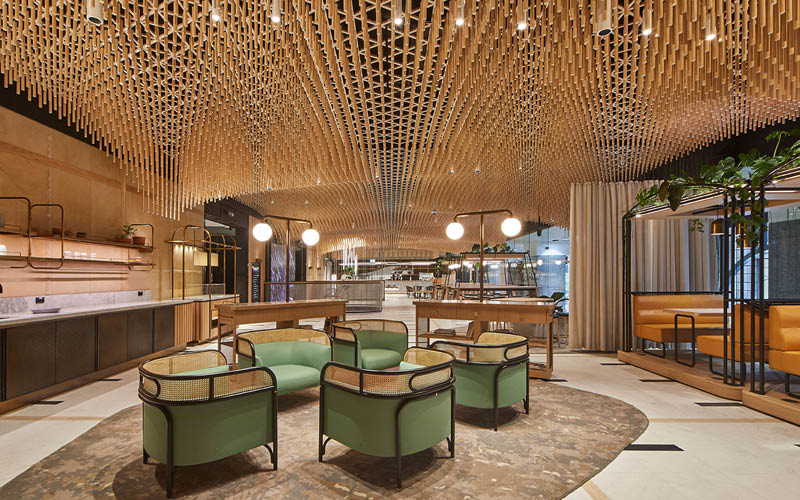 Designers: Adriano Pupilli Architects &Siren Design | Builder: Graphite Projects | Installer: Keystone Linings | Photographer: Tyrone Branigan | Product: Porta Dowel in Pine.
Designers: Adriano Pupilli Architects &Siren Design | Builder: Graphite Projects | Installer: Keystone Linings | Photographer: Tyrone Branigan | Product: Porta Dowel in Pine.
| Timber Species | Janka (kN) |
| Cumaru | 14.8 |
| Ironbark | 15 |
| Spotted Gum | 11.0 |
| Blackbutt | 9.1 |
| Merbau | 8.6 |
| Tasmanian Oak | 5.5 |
| Clear Pine | 3.3 |
| Meranti | 2.3 |
The Janka rating is determined by forcing a stainless steel ball halfway into the timber and measuring the kilo Newtons force it took to force the ball to that level.
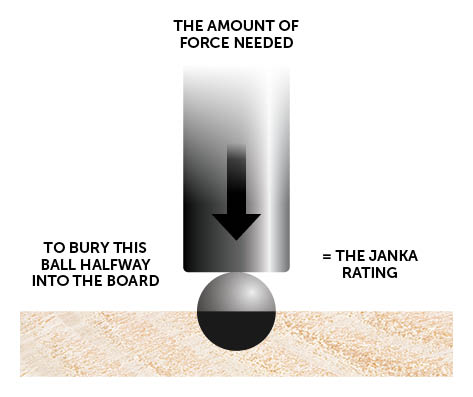
4. Stability
Stability in a timber refers to its expansion, contraction and shrinkage. Timber stability ensures a long lasting design.
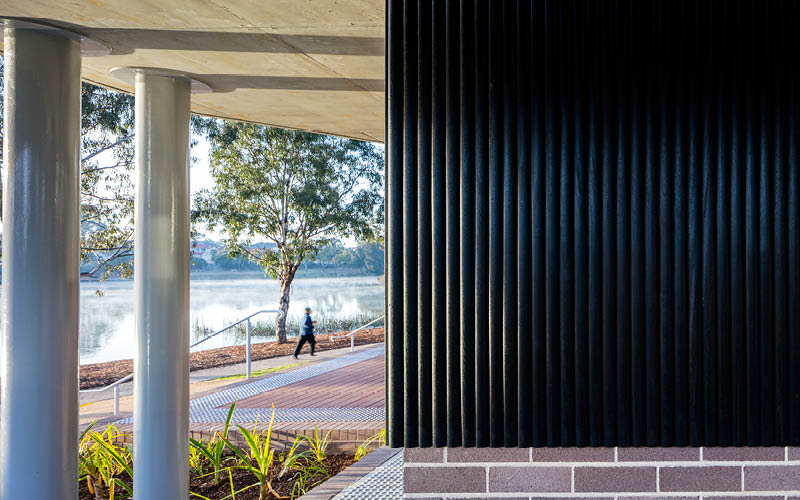 Woodcroft Neighbourhood Centre | Architects: Carter Williamson Architects | Builder: Westbury Constructions | Photography: Brett Boardman Photography | Products: Porta Contours – Riverine in Tasmanian Oak and Porta Endure – Riverine in Cumaru.
Woodcroft Neighbourhood Centre | Architects: Carter Williamson Architects | Builder: Westbury Constructions | Photography: Brett Boardman Photography | Products: Porta Contours – Riverine in Tasmanian Oak and Porta Endure – Riverine in Cumaru.
Internally, timber should contain 10-12% moisture content and 15-18% externally. At these levels, timber is less likely to expand and contract in a normal environment.
However, it’s very important to understand that environments change. In particular, wall paneling / lining boards and flooring is subject to temperature fluctuations (heating in winter and cooling in summer). Therefore, there is a tendency for the timber to expand and contract in these conditions. By combining a stable timber and a good design during the specification stage you can overcome these stability issues.
5. Other Design Considerations
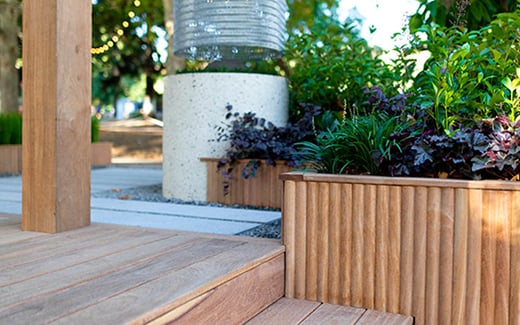 Designer: Mark Browning Design | Products: Porta Endure – Riverine, 145mm Decking, Posts and Beams in Cumaru.
Designer: Mark Browning Design | Products: Porta Endure – Riverine, 145mm Decking, Posts and Beams in Cumaru.
Ventilation and drainage are particularly important when using timber externally, especially in cladding and decking. Ensure you have adequate airflow around the timber to prevent it from becoming saturated and staying wet.
End-grain sealers are not commonly used in Australia and they should be. Timber tends to crack on the ends when it is not sealed. Proprietary sealers, such Teknoseal 4000, stop water from moving in and out of the timber preventing the ends from cracking.
When using timber for internal projects, consider its application. In high traffic areas where wear and tear is prominent, use a strong and durable timber species such as Tasmanian Oak. For light traffic areas or ceiling features, use a lighter, low density species such as Clear Pine or Primed FJ Pine.
Want to download the Timber 101 guide?

